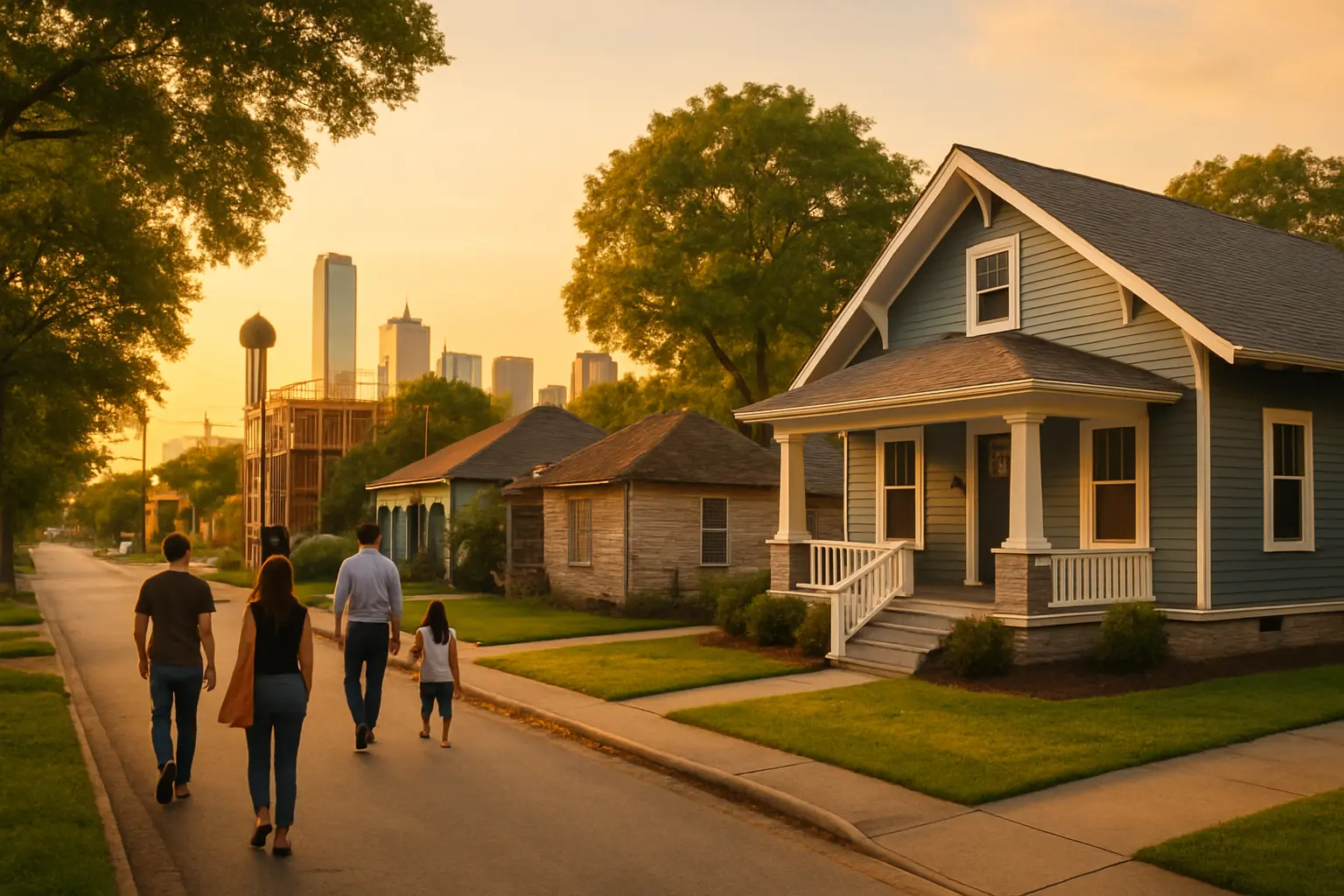The Hidden Value of Dallas's Transitional Neighborhoods: A Smart Investment Strategy
Discover why savvy homebuyers and investors are turning their attention to Dallas's evolving communities for maximum real estate potential.

Understanding Transitional Neighborhoods
Dallas's real estate landscape is constantly evolving, with certain neighborhoods presenting unique opportunities for savvy investors and homebuyers. These transitional areas, often overlooked gems, are characterized by several key indicators that signal their potential for significant appreciation.
Key Characteristics
- Infrastructure improvements: New sidewalks, street lighting, and public transportation developments
- Business development: Emerging local businesses, cafes, and retail spaces
- Community engagement: Active neighborhood associations and community events
- Property renovations: Visible home improvements and construction activity
Current Market Dynamics
The Dallas real estate market continues to demonstrate robust growth, particularly in transitional neighborhoods where property values are experiencing remarkable appreciation. These areas often show price increases that outpace the city's average, making them attractive investment targets.
Market Indicators
- Property value appreciation: 15-25% annual growth in select transitional areas
- Decreased days on market: Properties selling 30% faster than city average
- Renovation activity: Significant increase in building permits and home improvements
Smart Investment Strategies
Success in transitional neighborhoods requires a well-planned approach and careful evaluation of potential properties. Investors and homebuyers should focus on both immediate opportunities and long-term growth potential.
"The key to successful real estate investment in transitional neighborhoods is identifying areas showing early signs of positive change while maintaining realistic expectations about the timeline for transformation."
Investment Tips
- Research historical data: Analyze price trends and property value patterns
- Monitor local development: Track new construction and renovation permits
- Connect with locals: Engage with community members and local real estate professionals
- Evaluate amenities: Consider proximity to schools, shopping, and entertainment
Future Growth Potential
Dallas's transitional neighborhoods offer significant long-term benefits for those willing to invest early in the transformation process. Understanding the factors that drive neighborhood evolution is crucial for maximizing investment potential.
Long-term Considerations
- Economic development: New business districts and employment opportunities
- Population growth: Increasing demand for housing in developing areas
- Cultural evolution: Growing arts scenes and community activities
- Infrastructure expansion: Planned improvements to public services and facilities
Investing in Dallas's transitional neighborhoods requires patience, research, and a strategic approach. By understanding market dynamics, identifying key indicators of growth, and maintaining a long-term perspective, investors can capitalize on these emerging opportunities while contributing to the positive transformation of these communities.


